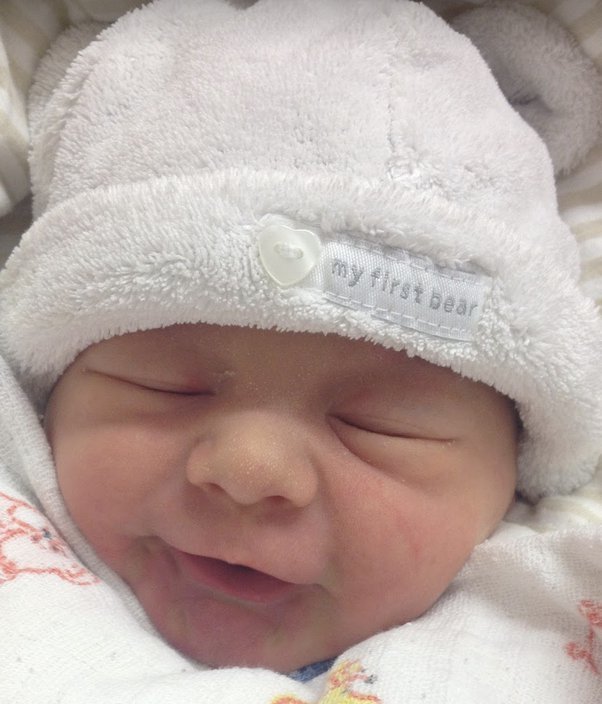You’re Not Doing Anything Wrong — But Let’s Figure Out What’s Going On
Your baby cries right after eating, and nothing you try seems to work. You’ve burped them, changed them, held them, rocked them — and yet, they’re still fussy. This situation is frustrating and confusing, especially when feeding should be one of the most comforting moments.
There’s no single answer for why this happens, but there are common causes that show up again and again in newborns. What matters is being able to recognize the signs and understand what’s happening inside their tiny system. Because when you know what to look for, it gets easier to help them feel better, and for you to breathe a little easier too.
Quick Summary: Why Babies Cry After Feeding
Crying after a feed can be caused by gas, reflux, overfeeding, hunger, or even sensitivity to formula or breast milk. While it’s normal in the early months, watching for patterns, like when the crying starts, how long it lasts, and what helps soothe it, can help pinpoint the cause. With a few small adjustments in how you feed, burp, or position your baby, most crying episodes become easier to manage.
1. Gas — The Most Common Culprit That’s Easy to Miss
Newborns have underdeveloped digestive systems, and one of the first ways that shows up is trapped air. Whether they’re bottle-fed or breastfed, babies tend to swallow air during feeds, especially if they’re feeding quickly or gulping due to a fast flow. That air doesn’t just pass through without issue. It gets stuck and causes cramping, pressure, and discomfort, all of which leads to crying.
If your baby starts squirming, pulling their legs toward their belly, or turning red in the face soon after a feed, gas is a strong possibility. Sometimes the crying starts slowly and escalates. Sometimes it ends the moment they burp or pass gas. The hard part? Not all babies burp easily and if that air doesn’t come out, it builds up fast.
To make a difference, focus on burping mid-feed rather than just at the end. Give them breaks to slow things down. Hold them upright against your chest or shoulder and apply firm but gentle pressure on the back, no patting needed, just stillness and time. If burping alone doesn’t help, try bicycle legs or gently massaging their belly in a clockwise motion. That can encourage the gas to move and settle.
You’ll likely see patterns. If the crying happens more often with bottles than breastfeeding, it might be about speed or nipple design. If it always comes right after a feed and ends with a fart or burp, you’re probably dealing with gas.
2. Reflux — When Milk Doesn’t Stay Down Comfortably
Reflux in babies isn’t rare. In fact, it’s incredibly common in the first few months. Their digestive systems are still maturing, and the muscle that keeps food down — the lower esophageal sphincter — doesn’t always do its job. When milk flows back into the esophagus, it causes burning and discomfort, even if no spit-up is visible. That’s what’s called silent reflux.
You may notice your baby cries not during the feed, but within minutes of finishing. They arch their back, squirm when lying flat, and may seem desperate for comfort but reject the bottle or breast when offered again. They might hiccup often, swallow frequently, or even seem to gag. Some babies develop a distinct pattern: eating well, crying hard, and calming only when held upright for an extended period.
One of the best ways to manage this is by adjusting the way you feed. Hold your baby upright during the feed and keep them upright for 20–30 minutes afterward. Avoid laying them flat right away, even for diaper changes. Smaller, more frequent feeds may also reduce the volume of milk and the risk of overflow. If symptoms persist or cause weight issues, your pediatrician may suggest reflux-specific formula, medication, or further evaluation.
Reflux often peaks around 4–5 weeks and improves dramatically after three months. Until then, positioning and timing can make a significant difference in how your baby handles feeds.
3. Hunger That Wasn’t Fully Satisfied
Crying after a feed doesn’t always mean too much milk — sometimes it means not enough. And it’s not always about volume. Babies can feel unsatisfied if the milk flow was too slow, if they latched poorly and didn’t get enough, or if they were distracted and didn’t finish.
This kind of crying tends to start fast and feel urgent. Your baby may show hunger cues even after feeding — rooting, licking lips, or trying to latch again. They may stop crying as soon as you offer more milk, especially if bottle feeding. If you’re breastfeeding, they may calm down once they’re back on the breast and stay there longer.
It’s also worth paying attention to feed times. If they’re short — under 10 minutes — your baby might not have reached the fattier part of the milk that comes toward the end of a session. That part helps with satiety. Babies who fall asleep too early or give up because the flow is slow might stop before they’re truly full.
Weighted feeds are an option if you’re unsure about how much your baby is getting. A lactation consultant can weigh the baby before and after a session to measure actual intake. It’s a helpful way to troubleshoot feeding issues and rule out supply problems if you’re breastfeeding.
4. Overfeeding That Leads to Belly Discomfort
It’s also possible that your baby is crying because they took in too much. This happens more often with bottle-fed babies than breastfed ones, but it’s not exclusive to either. Babies will sometimes keep drinking even after they’re full — either because they enjoy the sucking reflex or because the milk flow is fast and they can’t stop in time.
The signs here are a little different. You may notice your baby crying after finishing the bottle, then spitting up or vomiting shortly after. Their stomach may feel tight or bloated. They may arch their back, push the bottle away, or seem uninterested in feeding again for longer than usual.
If you suspect overfeeding, start by slowing things down. Switch to a slower flow nipple and take pauses every few minutes. Don’t feel pressure to finish the bottle. Follow your baby’s cues — if they turn their head away, stop sucking, or begin fussing, they’re likely done. It’s also helpful to avoid bouncing or jostling them right after a feed.
Some parents have success using paced feeding, which mimics the rhythm of breastfeeding and gives the baby more control. It also reduces air intake and helps prevent the overfull feeling that leads to crying and spit-up.
5. Possible Reactions to Formula or Something in Your Diet
If you’ve ruled out gas, hunger, and reflux but the crying still comes back — especially with gut-related signs like mucus in the poop or visible discomfort during digestion — it could be a formula sensitivity or food reaction.
This isn’t the first thing to assume, but it’s worth exploring if your baby consistently shows issues like frequent spitting up, rash around the mouth or diaper area, signs of constipation or diarrhea, or a general pattern of fussiness tied to feeding. Some babies react to proteins in cow’s milk formula. Others may be sensitive to something in breast milk — commonly dairy or soy.
Switching to a hypoallergenic formula can make a huge difference if your pediatrician suspects an intolerance. For breastfed babies, eliminating dairy from your diet and monitoring the change over 10–14 days can help identify if there’s a trigger.
Keep a feeding and symptom log. Track what your baby eats (or what you eat if you’re nursing), and jot down signs of discomfort. This gives your doctor useful info and helps you notice patterns that are easy to miss in the moment.
How to Narrow Down What’s Causing the Crying
If every feed ends with tears, the first step is not to guess — it’s to observe. What you want is a pattern. Is the crying always after bottle feeding but not breastfeeding? Does it only happen at night? Does it start instantly after feeding or 20 minutes later?
Start logging basic details:
- What your baby ate (formula or breastmilk, and how much)
- How long the feed lasted
- Burping success
- What the cry looked and sounded like
- Any spit-up, arching, or gassiness
- What finally calmed them down
It sounds like a lot, but even tracking for just 2–3 days helps spot the real issue. For example, if every bottle feed ends in fussing but breastfeeding doesn’t, that’s a clue about bottle flow or formula. If they’re gulping down milk in three minutes and then crying, they may be overfeeding or swallowing air. If the fussing only happens when laid down afterward, reflux is more likely.
Crying in babies isn’t random — it just feels that way because they can’t explain it. Your job is to become a quiet observer. Once you track the when, how, and what calms them, you’ll have something solid to work with.
What You Can Try at Home That Actually Makes a Difference
You’ve probably already Googled burping positions and gripe water, and maybe even tried switching bottles. But if nothing’s worked so far, it might be time to shift your routine — not just your tools.
Here’s what makes the biggest impact:
Feed in a more upright position
Hold your baby at a 45° angle instead of lying flat. This works with gravity to help keep milk down and reduce reflux pressure. For bottle feeding, try sitting them almost straight up with the bottle horizontal so the milk flow stays controlled.
Switch to paced bottle feeding
This mimics the rhythm of breastfeeding. You tilt the bottle only slightly so milk fills the nipple but not the entire thing. Let your baby suck for 20–30 seconds, then lower the bottle slightly for a pause. This prevents chugging, reduces air intake, and gives them control.
Burp mid-feed and again at the end
Don’t wait until they’ve finished the whole bottle. Burping halfway through helps get rid of the first wave of air before it builds up. Use pressure rather than pats — hold them upright, firm back against your shoulder or chest, and wait.
Watch for overstimulation right after feeding
Babies can be overwhelmed by lights, voices, bouncing, or even eye contact. After a feed, try holding them quietly on your chest in a dim room. If your baby tends to cry more in the evening, overstimulation might be a factor.
Adjust the nipple flow if using bottles
Every brand has different flow speeds. Just because the nipple says “newborn” doesn’t mean it’s slow enough for your baby. If they’re gulping, leaking milk, or gagging, go down to a preemie flow nipple. It slows things down and reduces air intake.
Eliminate dairy from your diet (if breastfeeding)
Only if you’ve seen recurring signs like gas, mucus in poop, or rashes. Give it 10–14 days to see change, and keep your pediatrician in the loop.
All of these strategies work better when they’re done consistently. There’s no silver bullet. But over the course of a few days, the results become clearer — shorter crying spells, better digestion, longer naps, and a calmer feeding experience overall.
When Crying Is a Red Flag, Not Just Fussiness
Babies cry — often. But there’s a point where it shifts from normal discomfort into something that needs medical attention. If your gut says something’s off, listen to it.
Here’s when it’s time to call your pediatrician:
- Crying lasts for hours and nothing works to soothe them
- Crying is high-pitched, intense, or sounds like a pain scream
- Your baby has a fever (especially under 3 months old)
- You see blood or mucus in stool
- Your baby isn’t gaining weight or is refusing most feeds
- They spit up large amounts forcefully or consistently
- They seem listless, unusually sleepy, or hard to wake
Most of the time, these aren’t signs of anything dangerous — but they still deserve professional attention. A pediatrician can check for allergies, infections, reflux severity, or underlying issues that aren’t obvious from the outside.
If nothing else, having someone assess the situation removes guesswork. You’ll walk away with a plan, or at the very least, peace of mind.
A Final Note to the Parents Still Searching for Answers at Midnight
There is nothing more frustrating than feeding your baby, doing everything “right,” and still getting tears at the end of it. It’s exhausting. It makes you question yourself. It makes 2am feel like the loneliest place on earth.
But your baby isn’t broken. You’re not missing something huge. You’re just working through the reality of newborn digestion, learning your baby’s unique patterns, and building confidence one feed at a time.
Sometimes it’s gas. Sometimes reflux. Sometimes they just want to be held a little longer while their tiny system settles. Whatever the cause, this stage doesn’t last forever — even if it feels like it will.
Keep tracking. Keep adjusting. And keep going. You’re doing better than you think.
✅ What You Can Do Next
- Update your daily feeding and crying log — look for those patterns.
- If bottle-feeding, test paced feeding and slow-flow nipples.
- Watch for red flags — but don’t panic if you’re just seeing some fussiness.
- Bookmark this post and revisit it with fresh eyes in a few days. Sometimes things click once you’ve seen the patterns a few times.
What to Read Next: More Baby Care Posts You Might Need
- Why Do Babies Cry for No Reason? → for decoding those random crying spells
- Can Babies Drink Cranberry Juice? → nutrition and digestive safety guide
- Coming soon: Best Burping Techniques for Newborns
- Coming soon: Colic vs Gas – What’s Actually Bothering Your Baby?
FAQs: Crying After Feeding — What Else Should I Know?
Q1: Is it normal for newborns to cry every time after feeding?
Yes — in the first few weeks, it’s common due to immature digestion, trapped air, or simple overstimulation. It becomes less common as their digestive system matures.
Q2: Can breastfeeding too often cause crying after feeding?
Not usually. Babies often breastfeed for comfort as well as hunger. However, if a baby is swallowing too much air or feeding too quickly, it could lead to gas or reflux.
Q3: Should I change bottles if my baby cries after every feed?
Possibly. Bottle design affects flow rate and air intake. If your baby cries more after bottles than breast, switching to a slower-flow nipple or anti-colic design can help.
Q4: Does gripe water really work for babies with gas?
Some parents swear by it, while others notice no change. It’s safe in moderation, but results vary. Talk to your pediatrician before using any supplements regularly.
Q5: What’s the difference between colic and reflux?
Colic usually follows a predictable evening pattern with no medical cause. Reflux causes discomfort tied directly to feeds, especially when lying flat or shortly after eating.









